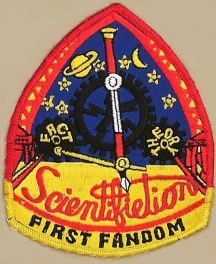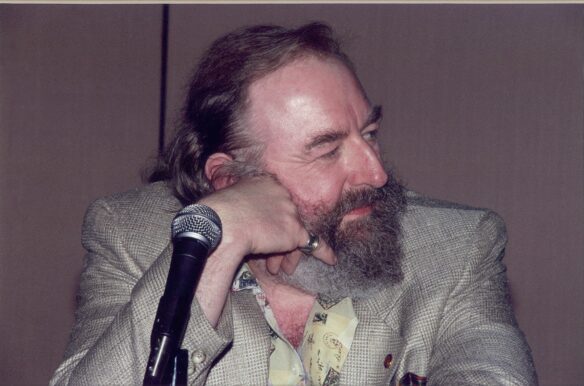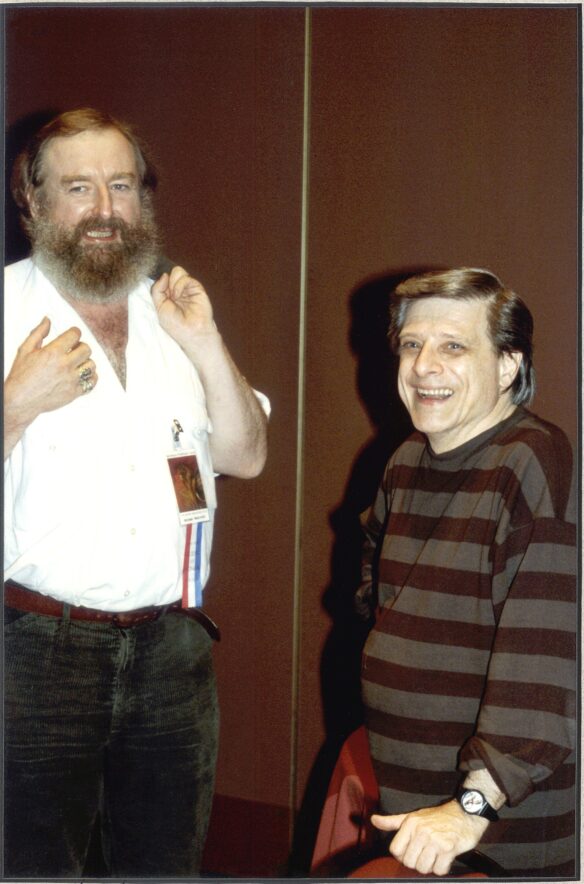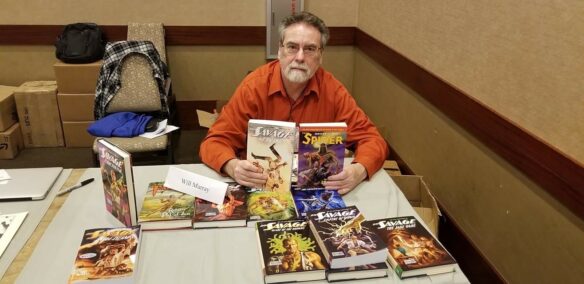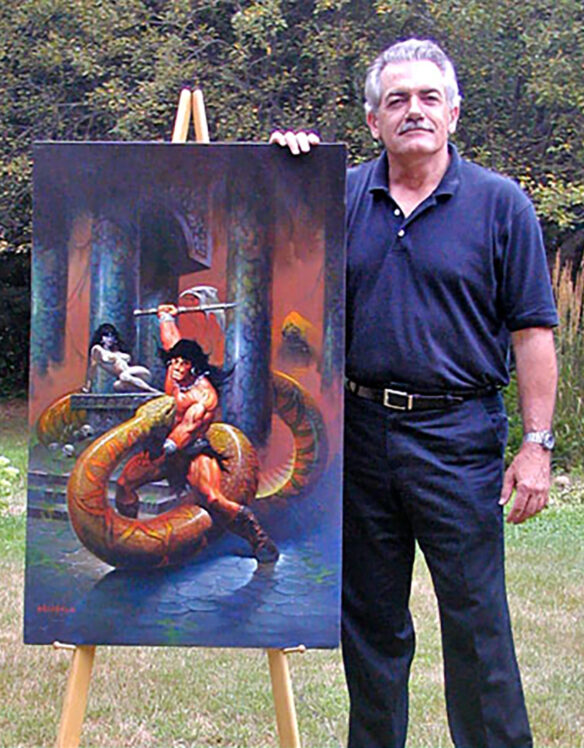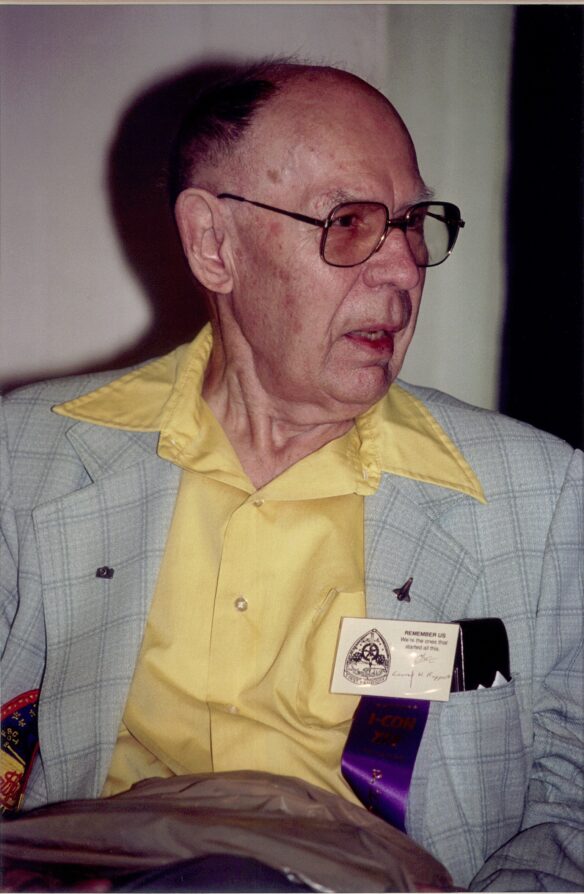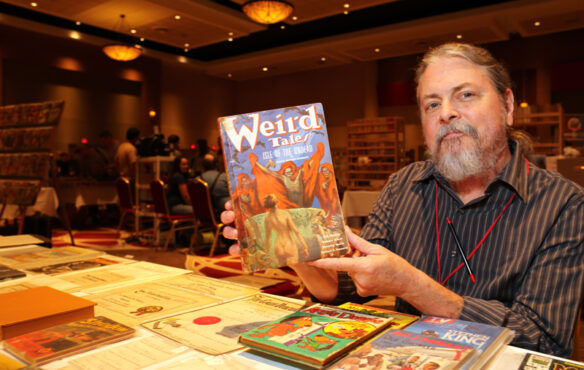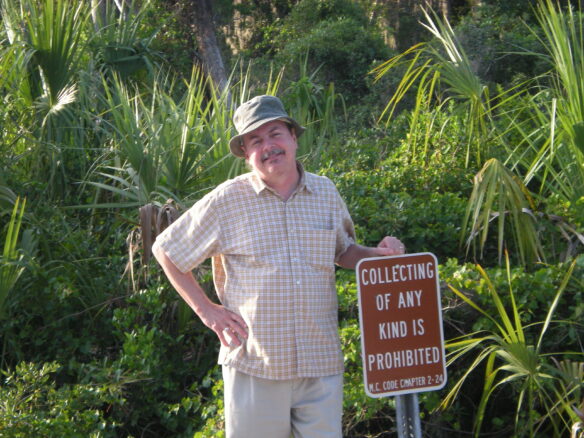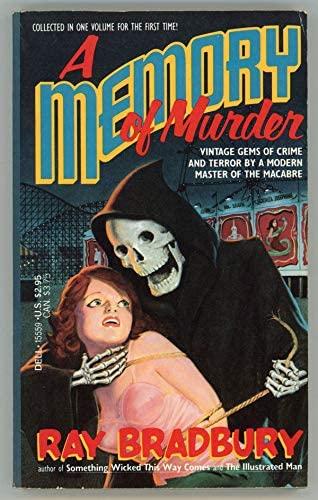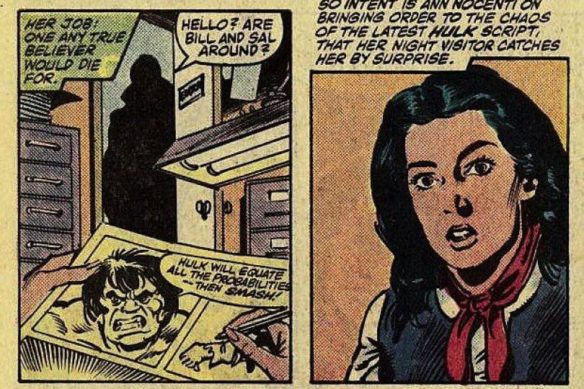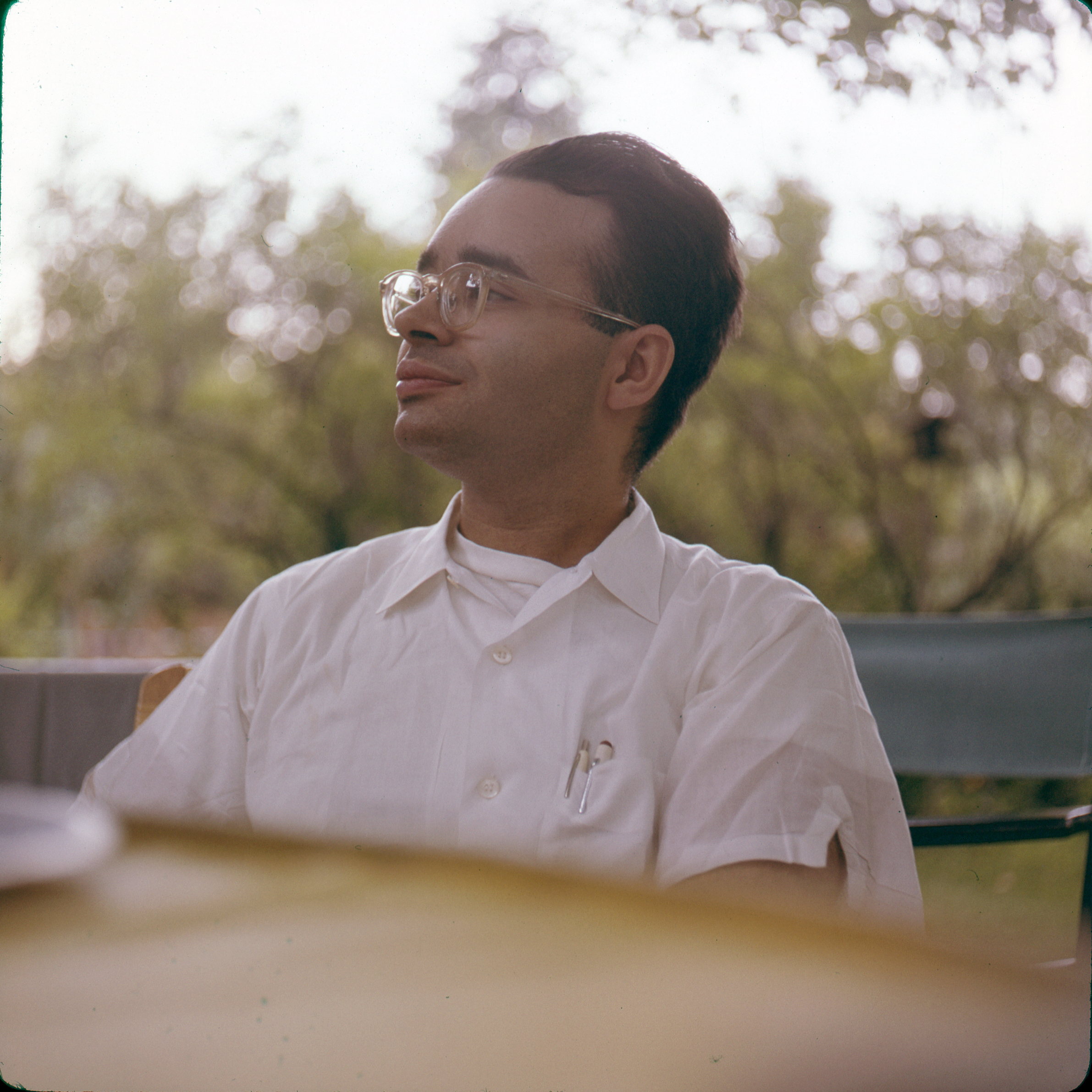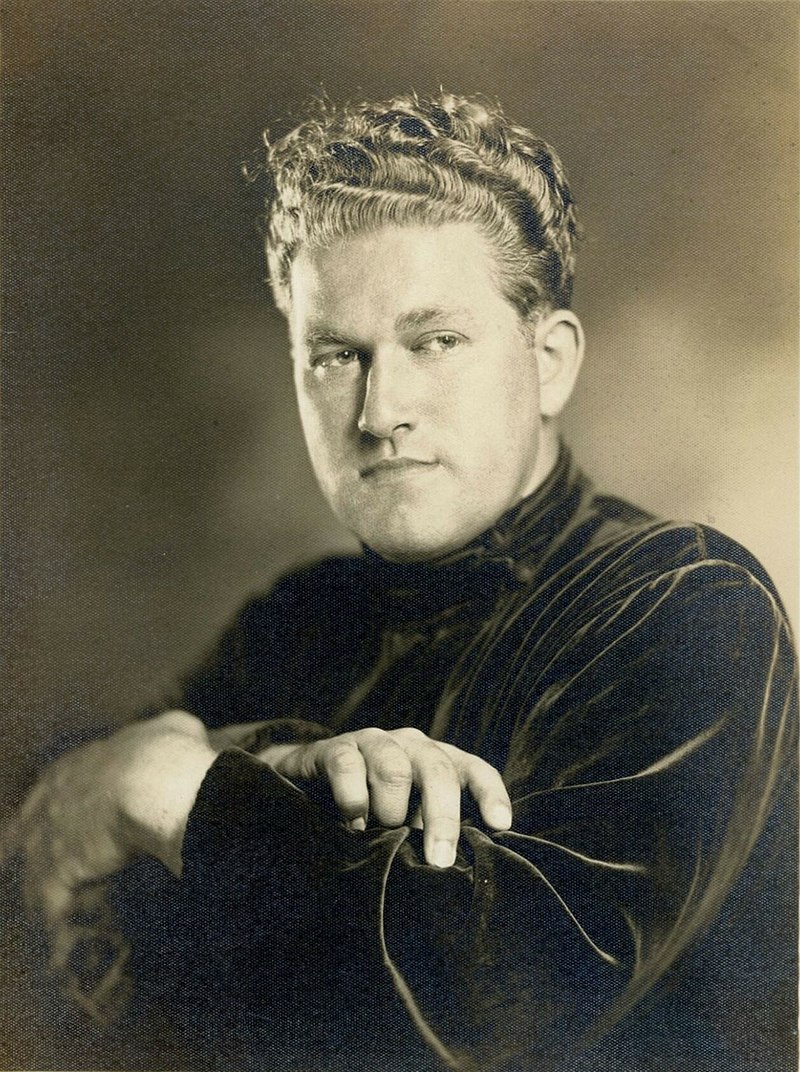(1) SEATTLE WORLDCON 2025 SHORT STORY CONTEST. The Seattle Worldcon 2025 today announced a short story writing contest with adult and young adult entry categories. The winners in each category will be recognized at the convention, receive free memberships to the convention, and have their stories published in an upcoming anthology by Grim Oak Press. Full details at the link: “Writing Contest – Seattle Worldcon 2025”.
Stories must draw inspiration from the Worldcon theme: Building Yesterday’s Future–For Everyone. This theme was selected to invoke nostalgia for the hopeful science-fictional era of the early 1960s, when Seattle held its first (and until now, only) Worldcon, followed up by the Century 21 Exposition (a.k.a. 1962 World’s Fair), showing the world a vision of its technological future, complete with freshly built Monorail and Space Needle.

(2) WHEN BAD NEWS IS BIG NEWS. Charlie Jane Anders answers the question “Why Are Toxic ‘Superfans’ Such a Nightmare for Hollywood?”
…But even if @Fanboy3997 is not a king-maker, he can do a certain amount of damage to a franchise. This is at least partly a reflection of the fact that the internet, like so many other media before it, does a better job of boosting negativity and hate than spreading anything positive. (“If it bleeds, it leads.”)
Disgruntled fans can help to shape the narrative about a project in various ways.
1) They can drown out the people who actually like it.
2) They can even harass anybody who expresses enthusiasm for a project they don’t like.
3) They can do the aforementioned review bombing, and harass actors and creators.
4) They can create the appearance of a major backlash, even if it’s really just five people and an swarm of bots.
5) And, though journalists will never admit it, a angry fans have a major ally in the journalistic profession, which will assist in blowing their complaints way out of proportion and creating a fake controversy in order to manufacture drama that in turn will lead to eyeballs on news sites.
To some extent, this is what happened with Star Wars: The Last Jedi, a movie that was a massive financial success and one of the most successful movies of all time, with an “A” on Cinemascore (signifying that audiences in theaters overwhelmingly loved it.) What I’m convinced were a relatively small number of fans had a meltdown, which probably would’ve had a limited impact if journalists hadn’t chosen to run with it and create a news cycle around the backlash. That, in turn, led to the notion that
(3) IDENTIFYING DANGER. “INTERVIEW: J. Michael Straczynski” at Grimdark Magazine asks JMS in the context of his work on Last Dangerous Visions.
[GdM] Can you explain your perspective, and, by extension, Ellison’s, on what makes a story “dangerous” in speculative fiction?
[JMS] The distinction you draw is correct, in terms of how this relates to speculative or science fiction. There has been a lot of hard-edged, socially challenging writing in other forms and genres. Alan Ginsberg’s Howl, Jack Kerouac’s On the Road, the raw emotionalism of Lawrence Ferlinghetti’s A Coney Island of the Mind, JD Salinger’s Catcher in the Rye…all of them pushed the frontiers of writing, and many of them got banned or ended up in court on obscenity charges. But they kept on writing, because it was necessary to take a stand for literary freedom.
The SF genre was (and to a degree still is) fairly conservative and, seeing what happened to the writers noted above, tended to steer clear of controversy. This persisted up until the time of Harlan’s first Dangerous Visions anthology and the slow birth of New Wave Science Fiction (with writers like Michael Moorcock, Ursula K. Leguin, Samuel R. Delany and others poking at the walls of conservatism) which DV codified from individual efforts into a movement.
What makes a story dangerous in speculative fiction? Anyone who is willing to risk controversy, to speak to the flaws of society, to sexual and political issues even though they might get in trouble as a result. Harlan once wrote that “the chief commodity a writer has to sell is their courage,” and for me, that’s what a dangerous vision is all about: a story that requires a modicum of courage to tell it.
(4) FIRST FANDOM ANNUAL 2024. Editors John L. Coker III and Jon D. Swartz invite fans to order the First Fandom Annual 2024, devoted to a “History of the Sam Moskowitz Award”.

- Remembering Sam Moskowitz
- The Sam Moskowitz Archive Award
- The Sam Moskowitz Collection
Articles by Sam, photographs With Hal W. Hall, David A. Kyle, Robert A. Madle, Julius Schwartz, Jon D. Swartz, Ph.D., Joseph Wrzos
Fifty-six pages, 28# paper, heavy gloss color covers, printed endpapers, face-trimmed, saddle-stitched, B&W interiors, with color illustrations throughout.
Limited to (26) copies, available for $35. each (includes packaging, Priority Mail, insurance). Please send check or money order for $35 (payable to John L. Coker III) at 4813 Lighthouse Road, Orlando, FL – 32808.
(5) ALTERNATE BATMAN. [Item by Danny Sichel.] Paul Dini found some notes in his car on which he had long ago written alternate ideas for the resolution to Batman Beyond.
(6) ART HENDERSON (1942-2024). Virginia fan Art Henderson died October 12 at the age of 82. He is survived by his wife, Becky.

(7) TODAY’S BIRTHDAY.
[Written by Mike Glyer.]
Born October 14, 1952 – Charlie Williams. (Died 2021.) Fan artist Charlie Williams first came to prominence as a regular contributor to Chat, the Chattanooga clubzine published by Rich and Nicki Lynch. He also later appeared in all 30 issues of their Hugo-winning genzine Mimosa.
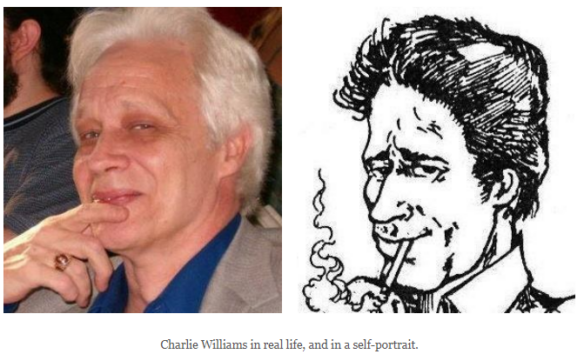
Williams was a member of the Knoxville Science-Fantasy Federation and in the 1970s, he owned a comics store in Knoxville and taught cartoon illustration at the University of Tennessee. At one time he was a member of the Spectator Amateur Press Association. He was guest of honor at Imagincon ’81 (1981), Con*Stellation II (1983), and Roc*Kon 8 (1983).
Williams loved to draw complex, inventive scenes several of which are displayed below, including a cover for an issue of File 770 from the Eighties.



(8) COMICS SECTION.
- Brewster Rockit discovers the reason for a recent space event.
- Eek! obviously thinks it’s “threat or treat”.
- Lio has a classic reference.
- The Argyle Sweater missed an update.
- Macanudo underrates genre reading.
- Tom Gauld knows about speed reading.
- And he’s had better days.
(9) POLITICAL COMICS. The makers of the “Stop Project 2025 Comic” website say:
We’re a group of comic book writers & artists who are furious about Project 2025, The Heritage Foundation’s plan to consolidate power under authoritarian rule. So we made a bunch of comics to explain their agenda and move you to vote against it.
(10) VIDEO GAME WITH NUANCE. “Metaphor: ReFantazio is the rare fantasy game that goes beyond racism 101” declares The Verge’s reviewer.
…But Metaphor is more than just a stylish, dynamic RPG — it’s also the rare fantasy story that tackles discrimination with nuance.
In a lot of fantasy, I’m annoyed by the storytelling conceit of using discrimination against fantasy races as an allegory for real-world racism. Stories featuring this trope usually stop at the “racism is bad” surface level, demonstrating that with ugly over-the-top displays of violence (hey there, Dragon Age) while ignoring the subtleties that make racism so heinous and pervasive. Metaphor manages to incorporate and tackle both aspects of this reality.
There’s a moment when you’re reading a fantasy book with a companion, and they mention that realizing their goal of a world where everyone is treated equally won’t be enough. “Equal competition doesn’t mean equal footing,” Heismay says. It’s the first time I’ve seen a video game acknowledge that simply stopping the big bad evil racist won’t magically make up for the countless generations of oppression. The game does the same with class and wealth. There’s a character vying for the throne who wishes to essentially “eat the rich” and redistribute their wealth at the point of a guillotine. But by virtue of her extremely low status, she sees everybody with more than a few coins to rub together as her ideological enemy. It’s just like when people in poverty lash out at other people a little bit less in poverty when their real enemies are the wealthy powerholders who exploit that animosity. It’s awesome that the game calls that out….
(11) SPACE DETECTIVE WORK. NASA’s JPL announces “First Greenhouse Gas Plumes Detected With NASA-Designed Instrument”.
The imaging spectrometer aboard the Carbon Mapper Coalition’s Tanager-1 satellite identified methane and carbon dioxide plumes in the United States and internationally.
Using data from an instrument designed by NASA’s Jet Propulsion Laboratory in Southern California, the nonprofit Carbon Mapper has released the first methane and carbon dioxide detections from the Tanager-1 satellite. The detections highlight methane plumes in Pakistan and Texas, as well as a carbon dioxide plume in South Africa.
The data contributes to Carbon Mapper’s goal to identify and measure greenhouse gas point-source emissions on a global scale and make that information accessible and actionable.
(12) ANNUAL APPARITION. “It’s Spirit Halloween season. How does the retailer stay afloat year-round?” NPR tried to find the answer.
SELYUKH: It is unusual. To be clear, it is a private company – Spirit Halloween – so we don’t know for sure, all of the under-the-hood stuff. They do skip the most expensive parts of being a retailer. That’s kind of how they save a lot of money on rent, utilities, workers. If you think about it, their stores – most of them are not permanent. Most of the store workers are temporary. Much of the year, Spirit Halloween mainly pays a big team to scout real estate locations, looking for empty store fronts. Then in late summer, the hustle starts for new stores to materialize. They’ve built over 1,000 of them.
RASCOE: That has to be a really big operation, like, turning all of these empty spaces into stores.
SELYUKH: It is, and it is very fast, too. You know, last year, I talked to a woman who worked at a mall where Spirit Halloween took over shuttered Sears, and she was describing an insane speed, like a matter of days. And I should say, I have tried a few times to get a tour of how Spirit Halloween works in an empty store or at least an interview with some official, and they don’t do interviews.
RASCOE: So you got ghosted. You see what I did there….
(13) EUROPA CLIPPER LAUNCHES. “NASA spacecraft rockets toward Jupiter’s moon Europa” and AP News wishes it bon voyage.
A NASA spacecraft rocketed away Monday on a quest to explore Jupiter’s tantalizing moon Europa and reveal whether its vast hidden ocean might hold the keys to life.
It will take Europa Clipper 5 1/2 years to reach Jupiter, where it will slip into orbit around the giant gas planet and sneak close to Europa during dozens of radiation-drenched flybys.
Scientists are almost certain a deep, global ocean exists beneath Europa’s icy crust. And where there is water, there could be life, making the moon one of the most promising places out there to hunt for it.
Europa Clipper won’t look for life; it has no life detectors. Instead, the spacecraft will zero in on the ingredients necessary to sustain life, searching for organic compounds and other clues as it peers beneath the ice for suitable conditions…
(14) COMET A3 FROM THE DC SUBURBS OF MARYLAND. [Item by Rich Lynch.] An iPhone photo…I just held the phone as steady as I could and hoped for the best. I’m actually amazed that it worked!
For those wanting to see the comet, this evening it’s located halfway between Venus and Arcturus, and remains visible for probably a couple of hours after the sun has set.

(15) TAKE INSPIRATION FOR YOUR HALLOWEEN BAKING. “Swedish chef making a pumpkin pie” – a Muppets excerpt.
(16) IN NO TIME AT ALL. Boing Boing says “’Skip Danger vs the Space-Time Continuum’ is a hilarious anti-time travel movie”.
…A wonderfully self-aware homage to Back to the Future and Hot Tub Time Machine — minus, perhaps, the actual time machine.
[Thanks to Kathy Sullivan, Teddy Harvia, Mike Kennedy, N., Danny Sichel, Rich Lynch, Andrew Porter, John King Tarpinian, Chris Barkley, Cat Eldridge, SF Concatenation’s Jonathan Cowie, and Steven French for some of these stories. Title credit belongs to File 770 contributing editor of the day John A Arkansawyer.]






















